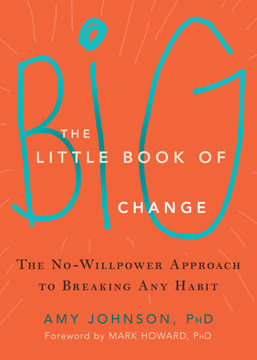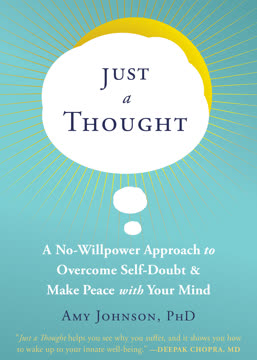Key Takeaways
1. Your True Nature is Healthy and Habit-Free
Home base for all human beings—regardless of our present condition—is mentally healthy, content, and free of destructive habits.
Innate well-being. You are born with an inherent state of mental health, clarity, and peace. This is your default setting, your true nature, untouched by any temporary thoughts, emotions, or behaviors, including habits. When you feel good, you are simply experiencing this natural state.
Habits are temporary. Your habit is not a permanent part of who you are; it's not in your fundamental nature. It's like weather passing through a clear sky – it might obscure the sun temporarily, but it doesn't affect the sky itself. You weren't born with your habit, and it doesn't define your core being.
Always accessible. This healthy, habit-free part of you is always present and fully intact. Even when you feel lost in your habit, you are never truly far from your innate well-being. Your resilience and ability to reconnect with this truth are always available.
2. Your Entire Experience is Created by Thought
From moment to moment, we feel only what’s on our mind—and it is how we feel, which is the direct result of thought, that drives 100 percent of our behavior.
Thought creates reality. Everything you experience in life – your feelings, perceptions, and reactions – comes to you via your own thinking. You don't directly experience external reality; instead, your mind uses sensory information to create a subjective picture of the world, which you then believe is real.
Inside-out experience. Your feelings are never a direct result of external circumstances like a coworker's comment or a stressful situation. They are always a result of your thinking about those circumstances. This means nothing outside of you can make you feel or do anything.
Dreams as metaphor. Like dreams at night, where your inner world creates a vivid reality that feels real until you wake up, your waking life is also a thought-created experience. Recognizing this allows you to see that your experience is malleable and not dictated by the outside world.
3. Habits Are Misguided Attempts to Feel Better
Your habits are misguided attempts to feel more comfortable in your own skin.
Seeking comfort. Nearly all habits begin as an innocent attempt to feel better or escape discomfort. They are a way to numb out, leave the present moment, or return to a perceived state of peace when you're feeling restless or uneasy.
Temporary relief. Habits are incredibly effective at providing short-term relief from painful thinking. They quiet inner conflict and distract you from uncomfortable feelings, making them look like the best and fastest option available in the moment.
Valuable signal. Your habit is actually a helpful indicator of your state of mind. The tension or dis-ease that precedes a habit is a signal that you are lost in personal thoughts, creating an uncomfortable experience. It's an invitation to step back and let your mind clear.
4. Urges Are Impersonal, Temporary Thoughts
Urges are simply thoughts or feelings that encourage you to act on your habit.
Thought in disguise. Urges, no matter how intense or physical they feel, are fundamentally just thoughts. They are the outward manifestation of temporary thinking, brought to life by consciousness, creating physical and emotional sensations.
Inner alarm clock. Urges function like an unintelligent, programmed alarm clock. They are a signal that you are veering off course mentally, using your power of thought in an unhelpful way. They are a wake-up call to step back, not a command to act.
Harmless and fleeting. Urges are meaningless and impersonal. They are your brain's conditioned response, trying to keep a habit alive, but they have no inherent power. Like all thoughts, they are temporary and will fade on their own if not fueled by attention or action.
5. Willpower Is the Wrong Tool; Insight Is
Willpower is more thinking.
More thinking isn't the answer. Relying on willpower to break a habit involves using more thought to try and overpower existing thought. This is like trying to put out a fire by adding more fuel; it often backfires, giving more attention and energy to the very thoughts you want to eliminate.
Attention strengthens. Neuroscience shows that focusing on a thought, even to resist it, activates and strengthens the neural pathways associated with it. Trying not to think about something, like a white bear, paradoxically makes you think about it more (Ironic Monitoring Process).
Inconsistent and draining. Willpower requires significant mental and emotional resources, making it inconsistent and unreliable, especially when you're tired, stressed, or in the throes of a strong urge. When you need it most, it's least available.
6. Insight Changes Behavior Effortlessly
When you have a deep, personal insight about something, you see a new truth that tends to naturally and effortlessly affect your behavior.
Beyond intellect. Insight is a deeper form of knowing than intellectual understanding. You might understand concepts logically, but insight touches you on a profound level, leading to spontaneous changes in feeling and behavior without conscious effort or practice.
Seeing anew. Insight is like suddenly seeing a rope you thought was a snake; the object hasn't changed, but your perception has, and your reaction (fear) vanishes effortlessly. When you see your habit or urges in a new light, their perceived power dissolves.
Passive transformation. You cannot force insight, but you can create conditions that encourage it, such as approaching new ideas with an open, non-analytical mind ("showing up dumb"). Insight often occurs when your mind is quiet and receptive, not when you're actively trying to figure things out.
7. There Is Power in the Pause (Free Won't)
The presence of urges (or any thoughts, for that matter) is not our business—our free will cannot determine what shows up. But the choice to respect or act on those urges is where we do have some say. We have free won’t.
The choice point. Between the moment an urge arises and the moment you act on it, there is a window of opportunity – a choice point. Even if it feels instantaneous, there is always a space where you can choose how to respond.
Veto power. Your higher brain, powered by universal mind, gives you "free won't" – the ability to veto or choose not to act on an urge or thought. No matter how loud the "inner lizard" screams, it cannot force your voluntary actions.
Creating space. Consciously pausing before acting, even imperfectly at first, creates space between you and the urge. This space allows wisdom to peek through and makes it easier to see the urge as temporary thought, not a command that must be obeyed.
8. That Habit Voice Is Not "You"
The Addictive Voice is the voice that tells you you’ll never be free of your habit, so why try?
Impersonal messages. The thoughts or "voices" that encourage your habit (sometimes called the Addictive Voice) are not your true voice or reflective of who you are. They are predictable, repetitive messages from the conditioned lower brain, like a broken record.
Distinguishing truth. Your natural state is peace and well-being. Any thought or inner voice that creates pain, confusion, or suffering is biased, untrue personal thinking, not objective reality or your innate wisdom.
Witness, not owner. You are the awareness, the consciousness, that notices these thoughts and voices. You are the witness to them, not the thoughts themselves. Recognizing this distance makes it much easier to dismiss them as harmless, fleeting phenomena.
9. Setbacks Are Normal and Meaningless
Falling back into habitual behavior is the rule, not the exception, and it means absolutely nothing.
Not a failure. Slipping back into a habit after a period of being habit-free is incredibly common and does not negate your progress. It's a reflection of the brain's tendency to follow well-worn neural pathways, especially when the mind is busy or stressed.
Meaning is the problem. The real issue with a setback isn't the behavior itself, but the meaning you attach to it. Believing a slip-up means you're a failure or that recovery is impossible is what derails progress, not the act of falling back itself.
Opportunity to learn. View setbacks as meaningless events, like tripping while walking. You simply notice it, get back up, and continue on your path. They can even be helpful cues, reminding you to step back and let your mind settle, reinforcing your understanding.
10. Understanding Thought Changes Everything
The mere presence of thought is not a problem.
Thought is vaporous. Thoughts and urges are like clouds – from a distance they seem solid, but up close they are vaporous and insubstantial. Their power comes only from the meaning and attention we give them.
Attention solidifies. When you treat thoughts as solid or dangerous by resisting, denying, or trying to fix them, you shower them with attention. This inadvertently magnifies them in your consciousness, turning vapor into what feels like concrete and creating the "sticky" experience of being stuck.
Effortless release. When you see the true, impersonal, ebbing-and-flowing nature of thought, you naturally hold it less tightly. You can witness thoughts and urges without diving into them or being hurt by them. Removing your focus allows them to remain vaporous and fade on their own.
11. It Gets Easier; A New Normal Emerges
As time goes on, leaving your habit behind becomes far easier than it is at the outset.
Evolution of ease. The initial effort of noticing and dismissing urges becomes less necessary over time. As your understanding deepens and you practice letting thoughts fade, your mind naturally gravitates less toward habitual patterns.
Foundation shifts. As you consistently see the truth about your innate health and the temporary nature of thought, your fundamental relationship with your habit changes. This shift is like learning the principles of baking; mistakes still happen, but you understand the underlying system and no longer feel powerless.
Innate relaxation. You don't need your habit to relax or feel good. Those feelings come from within, from your natural state of well-being when your mind settles. As your habit fades, your baseline shifts upward, and you access this innate peace more easily and naturally, creating a new, habit-free normal.
Last updated:
FAQ
1. What is "The Little Book of Big Change" by Amy Johnson about?
- No-willpower approach to habits: The book presents a unique, no-willpower method for breaking any habit, focusing on understanding rather than force or discipline.
- Integration of science and spirituality: Johnson combines modern neuroscience with spiritual principles, especially the Three Principles (Mind, Thought, Consciousness), to explain how habits form and how they can be changed.
- Habits as thought-based experiences: The book argues that all habits—whether behavioral or mental—are impersonal, thought-based experiences that can be addressed without analyzing the past or using traditional coping mechanisms.
- Emphasis on insight: Rather than offering step-by-step techniques, the book aims to foster deep insights that naturally lead to lasting change.
2. Why should I read "The Little Book of Big Change" by Amy Johnson?
- Break free from habits: If you struggle with unwanted habits or addictions, the book offers a hopeful, practical path to freedom without relying on willpower.
- New paradigm for change: Johnson introduces a fresh perspective that challenges conventional wisdom about habit change, making it accessible and less daunting.
- Applicable to all habits: The approach works for both behavioral habits (like overeating, smoking, or gambling) and mental habits (like anxiety, worry, or phobias).
- Empowering and compassionate: The book helps readers see their innate health and resilience, reducing guilt and self-blame associated with habits.
3. What are the key takeaways from "The Little Book of Big Change" by Amy Johnson?
- Habits are not personal flaws: Habits are the result of habitual thought patterns, not character defects or lack of willpower.
- Insight over information: Lasting change comes from deep, personal insight rather than accumulating more information or using forceful techniques.
- Thoughts and urges are temporary: All thoughts, including urges, are fleeting and lose power when not acted upon or resisted.
- You are innately healthy: Beneath habits and thoughts, everyone has an innate well-being and capacity for change.
4. How does Amy Johnson’s no-willpower approach to breaking habits work?
- Understanding, not fighting: The method focuses on understanding the true nature of habits and urges, rather than battling them with willpower.
- Seeing through urges: By recognizing that urges are just temporary thoughts, you can allow them to pass without acting on them.
- Insight leads to change: When you see your habit in a new light, change happens naturally and often effortlessly.
- No need to analyze the past: The approach does not require digging into your history, identifying triggers, or replacing habits with new behaviors.
5. What are the Three Principles (Mind, Thought, Consciousness) in "The Little Book of Big Change" and how do they relate to habits?
- Universal Mind: The intelligence and energy behind all life, providing innate wisdom and well-being.
- Thought: The creative force that shapes all experience; habits are simply patterns of thought that have been repeated.
- Consciousness: The awareness that brings thoughts to life, making them feel real and compelling.
- Habits as thought-created: Understanding these principles helps you see that habits are not fixed parts of your identity, but temporary experiences created by thought.
6. How does "The Little Book of Big Change" by Amy Johnson explain the role of neuroscience in habit change?
- Neuroplasticity and habits: The book explains that the brain is plastic and can rewire itself based on how you respond to thoughts and urges.
- Urges as brain patterns: Acting on urges strengthens neural pathways, but dismissing them weakens those pathways over time.
- Self-directed change: By changing your relationship to urges (viewing them as harmless thoughts), you can physically alter your brain’s habit circuits.
- Science supports insight: Research on mindfulness and OCD shows that insight and detached observation can be as effective as medication in changing habits.
7. What is the difference between behavioral and mental habits according to Amy Johnson?
- Behavioral habits: Outward actions like overeating, smoking, gambling, or compulsive shopping, driven by urges to feel better.
- Mental habits: Persistent thought patterns such as anxiety, worry, phobias, or self-criticism, which create internal discomfort.
- Common root: Both types of habits are maintained by the way you relate to and act on your thoughts.
- Unified approach: The book treats both behavioral and mental habits as thought-based, making the same principles applicable to both.
8. How does "The Little Book of Big Change" by Amy Johnson redefine urges and cravings?
- Urges as alarm clocks: Urges are likened to an inner alarm clock—automatic, impersonal signals from the lower brain, not emergencies.
- Not personal or dangerous: Urges are not signs of weakness or danger, but simply habitual thoughts that can be ignored.
- Powerless without action: Urges only have power if you act on them; left alone, they fade on their own.
- Helpful signals: Urges can be seen as reminders to step back and let your mind settle, rather than calls to action.
9. Why does Amy Johnson argue that willpower is the wrong tool for breaking habits?
- Willpower is limited: Relying on willpower is exhausting and often fails when you’re tired, stressed, or emotionally low.
- Fighting thought with thought: Using willpower means adding more thinking to an already thought-created problem, which can backfire.
- Resistance strengthens urges: Trying to suppress or argue with urges often makes them stronger and more persistent.
- Insight is easier: Seeing the truth about urges and habits makes them less compelling, reducing the need for willpower altogether.
10. What practical steps or advice does "The Little Book of Big Change" by Amy Johnson offer for ending habits?
- Pause before acting: Practice pausing when an urge arises, creating space to make a different choice.
- Recognize habitual thoughts: Identify the repetitive “soundtrack” of your inner lizard (lower brain) and learn to dismiss it.
- Trust your wisdom: Listen for your own inner wisdom, which is more accessible when your mind is calm.
- Let thoughts pass: Allow urges and thoughts to come and go without engaging or resisting them; they will fade naturally.
11. How does "The Little Book of Big Change" by Amy Johnson address setbacks and relapses?
- Setbacks are normal: Falling back into old habits is common and does not mean failure or that change is impossible.
- Meaningless in the big picture: Setbacks are simply signs that your mind is busy, not indicators of your character or future.
- Don’t add meaning: The real problem is the story you tell about the setback, not the behavior itself.
- Compassion and patience: Treat yourself with understanding and return to the principles; progress resumes naturally.
12. What are the most powerful quotes from "The Little Book of Big Change" by Amy Johnson and what do they mean?
- “If the only thing people learned was not to be afraid of their experience, that alone would change the world.” (Sydney Banks) – Encourages embracing all experiences, including urges, without fear, as they are temporary and harmless.
- “Your habit is a useful indicator that you are in a low state of mind, using your amazing power of thought to your detriment rather than to your benefit.” – Habits signal when you’re caught up in unhelpful thinking, not that you’re broken.
- “You are the awareness that notices the Addictive Voice. You are the witness to it, the consciousness that experiences urges and inner conflict but is not urges or inner conflict.” – Reminds readers that their true self is separate from thoughts and habits.
- “Behavior change is the consequence, not the solution. Behavior changes as a result of seeing things differently.” – Emphasizes that insight, not effort, is the key to lasting change.
- “There is nothing you must do.” – Reassures that change comes from understanding, not from following rigid steps or techniques.
Review Summary
The Little Book of Big Change receives mixed reviews. Some readers find it repetitive but insightful, praising its approach to breaking habits through mindfulness and understanding thoughts. Others criticize its new age spirituality and oversimplification of addiction. Positive reviews highlight the book's potential to change perspectives on habits and thoughts, while negative reviews argue it lacks scientific backing and practical advice. Many readers appreciate the core message that thoughts are not permanent and habits can be broken by observing urges without acting on them.
Similar Books
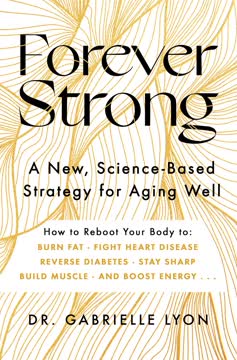
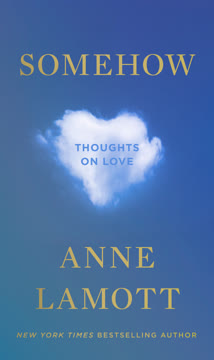
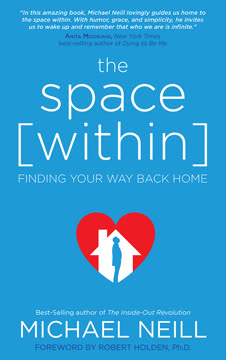
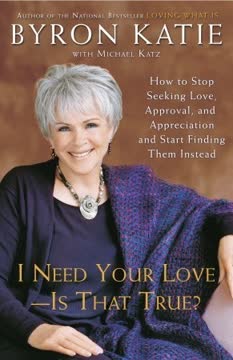
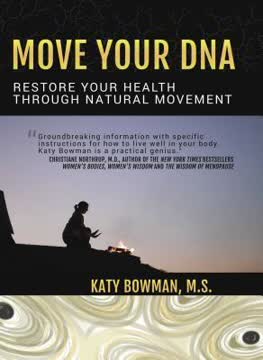
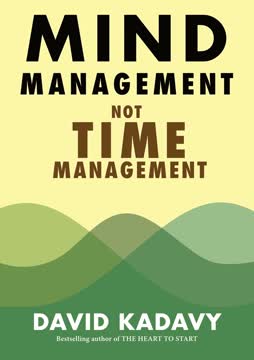
Download PDF
Download EPUB
.epub digital book format is ideal for reading ebooks on phones, tablets, and e-readers.
